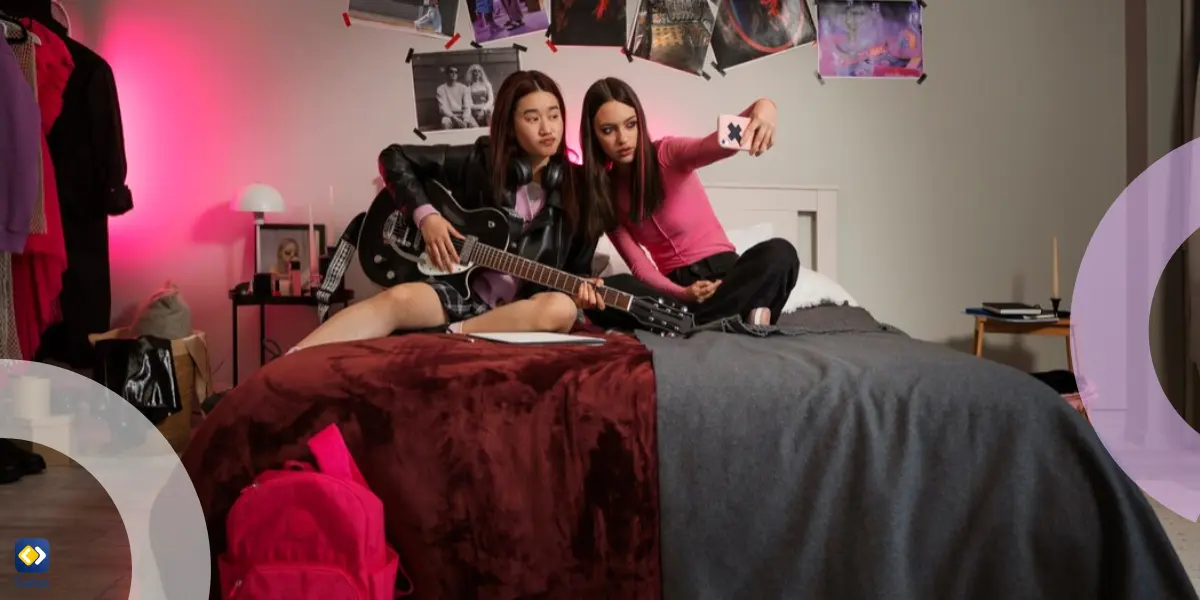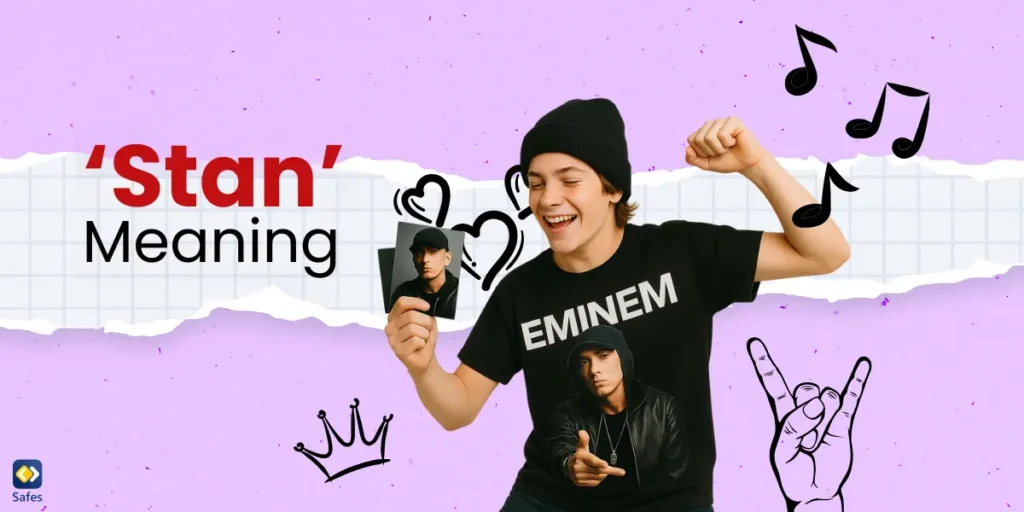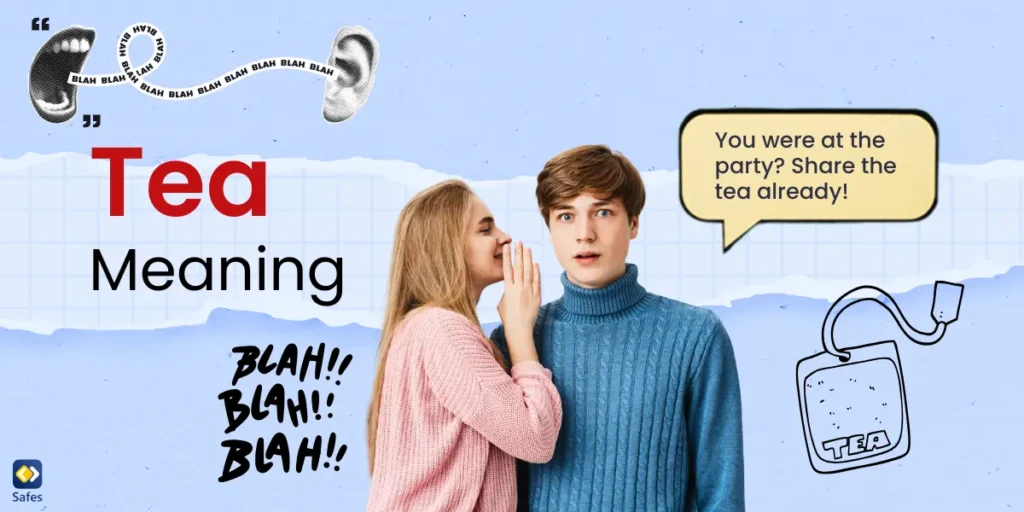If your teen says they ‘stan’ a celebrity or tells you “we stan a queen,” you might be left wondering what that even means. Don’t worry, you’re not alone. The meaning of ‘stan’ in slang has become a common way for teens and young adults to express intense admiration online. While many believe the term comes from Eminem’s 2000 song Stan, where an obsessed fan writes increasingly desperate letters, the connection has never been officially confirmed. In this blog, we’ll explore what ‘stan’ really means, how it’s used in real conversations and across social media platforms, what parents should know, and how certain tools can help you stay informed.
Download and Start Your Free Trial of the Safes Parental Control App
What is a ‘Stan’?
The term ‘stan’ is internet slang for an enthusiastic and devoted fan. It’s used to describe someone who is extremely or excessively enthusiastic about a celebrity, show, brand, or even a social media personality. While many believe the word comes from Eminem’s song Stan, which told the story of an obsessive fan, this origin hasn’t been officially confirmed. Regardless, the term has taken on a more casual and often positive meaning in everyday language. You might also see variations like stanning (as a verb, for example, “I stan this band”) or hard stan, which just means someone really, really into whatever they’re supporting.

How It’s Used in Real Digital Interactions
Kids and teens often use ‘stan’ in a playful or exaggerated way to show strong support for something or someone. It pops up in texts, comment sections, gaming chats, and even memes. For example, a teen might text a friend, “We stan a queen” after watching a performance they loved, or comment “I stan this” under a video that made them laugh. Sometimes it’s used seriously, but more often the tone is lighthearted or even a bit sarcastic. Think of it as digital cheerleading with a sprinkle of internet flair.
You might also see ‘stan’ used in group chats or gaming when someone defends a favorite character or game. For example, in a Discord chat during a game, a player might say, “I will always stan this map” or “Don’t come for my main, I stan her.”
Platform-Specific Usage
The tone and style of ‘stan’ can shift depending on where it’s being used. On TikTok, users might comment “I stan” on a viral video or include it in short skits and reaction videos, often with a humorous or exaggerated tone. On Snapchat, it might appear in private chats or group messages, used casually among friends, like “You actually stan that show?” paired with a reaction selfie.
Over on Instagram, ‘stan’ is commonly found in story replies or under celebrity posts, where fans show support with comments like “We stan talent.” On Discord and in gaming chats, it can get more intense or passionate, especially when users are defending their favorite streamers, characters, or strategies. While the vibe can be more competitive, it’s still mostly used in a fun and spirited way.
Overall, ‘stan’ is slang that lets teens express intense support, poke fun at it, depending on the moment and the platform.
Risk Level Indicator (Parent Alert System)
🟢 Green – Harmless everyday slang.
‘Stan’ is generally harmless and fits comfortably in the green zone. While its origins trace back to a song about an obsessive fan, today’s usage is much lighter and more playful. Most teens use it to show support or admiration, not in a serious or concerning way. Saying “I stan this” is often just another way of saying “I really like this” or “This is amazing.” Of course, like any word, tone and context matter, but in most digital conversations, it’s just friendly internet slang that reflects enthusiasm, not anything to worry about.
Trend Tracker: Is It Still Relevant?
📉 Fading – was big, but is declining
As of April 2025, ‘stan’ is fading. While it was once a go-to slang term across social media, especially during the height of fandom culture on X and TikTok, its everyday use among teens is starting to slow down. The word is still recognized and occasionally used, mainly in playful or ironic ways, but newer terms and trends are starting to take the spotlight. That said, ‘stan’ hasn’t disappeared completely. It still shows up in certain circles, especially among long-time fandoms or when people are being intentionally dramatic online.
![]()
Online Safety Considerations
The term ‘stan’ itself is not inherently dangerous, and in most cases, it is used playfully to express strong admiration. However, like many internet trends, it can sometimes be linked to more concerning behaviors, depending on the context. In extreme cases, ‘stan’ culture can fuel cyberbullying, online harassment, or unhealthy parasocial relationships where teens may feel overly connected to influencers or celebrities. It’s important to note that some ‘stan’ communities can be intense and emotionally charged, especially when disagreements arise online.
For parents, the best approach is to keep communication open. Ask your child what they mean when they use words like ‘stan’ and talk to them about healthy online behavior and boundaries. Encourage them to think critically about who they follow, how they engage, and how to handle online drama or pressure from peer groups. Checking in regularly about their social media habits and online communities can help you stay in the loop without being overbearing.
Can Parental Controls Help?
Yes, parental controls can play a helpful role in keeping things balanced. You can use Android’s built-in parental controls to manage your child’s online behavior. If you have a mixed-platform household, using the Safes parental control app might be a better option. With its availability on both Android and iOS devices, you can use it to manage multiple devices from one place.
Safes makes it easy to track screen time, monitor app usage, block inappropriate content, and even set location-based alerts. It gives you peace of mind by providing a clear view of your child’s online habits, while allowing them the freedom to explore the digital world in a safe way.
By combining Safes with regular, open conversations, you can stay informed about your child’s digital life, help ensure their online experiences are positive and secure, and still support their growing independence.
Conclusion
In short, ‘stan’ is a slang term that means an enthusiastic and devoted fan, often used by teens to show strong support for celebrities, shows, or trends. While its possible roots are intense, its modern use is usually lighthearted and harmless. Parents don’t need to worry, but it’s always a good idea to stay engaged—talk with your child about their online world and how they use language like this. For added peace of mind, tools like the Safes parental control app can help you stay connected and informed, without invading their independence.
Your Child’s Online Safety Starts Here
Every parent today needs a solution to manage screen time and keep their child safe online.
Without the right tools, digital risks and excessive screen time can impact children's well-being. Safes helps parents set healthy boundaries, monitor activity, and protect kids from online dangers—all with an easy-to-use app.
Take control of your child’s digital world. Learn more about Safes or download the app to start your free trial today!




